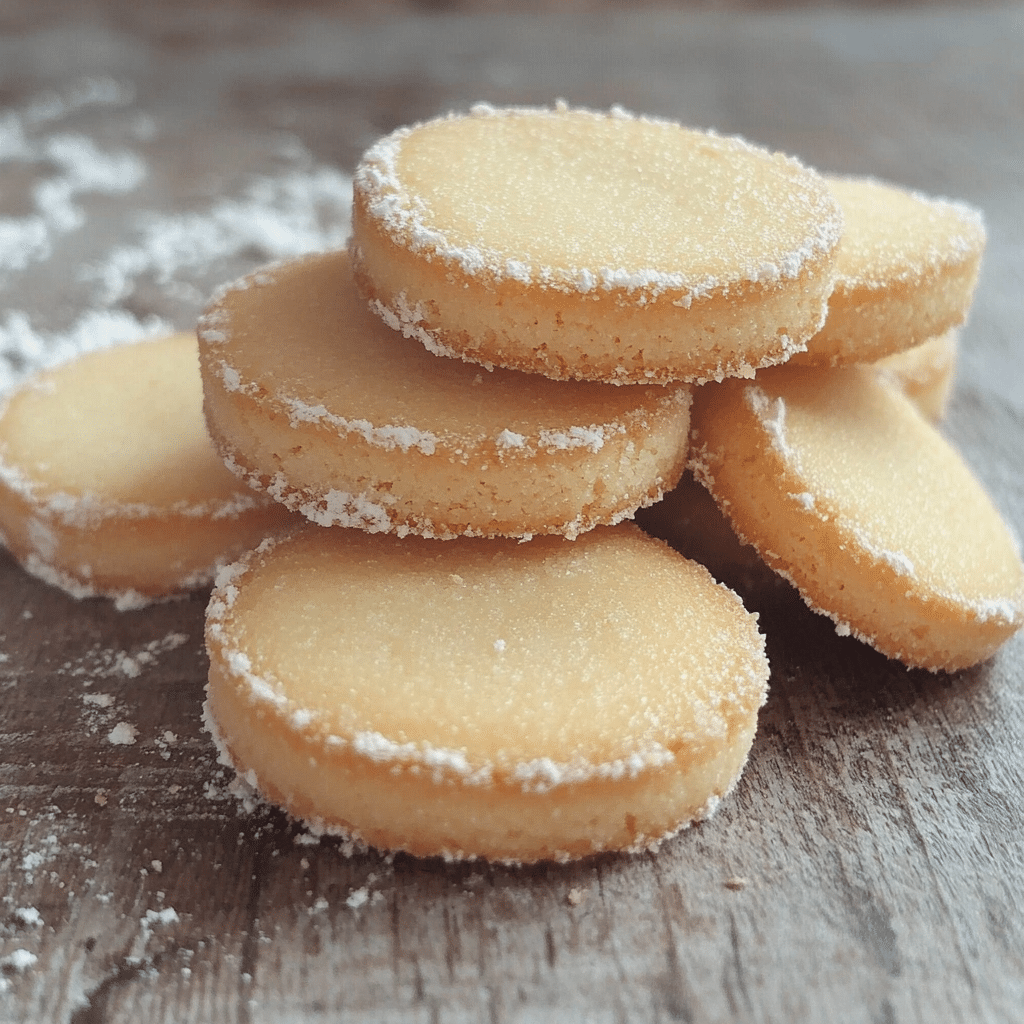When it comes to timeless baked treats that have graced dessert tables across generations, French butter cookies, or “sablés,” stand out with their unassuming elegance and irresistible charm. Perfect for afternoon teas, holiday gatherings, or as a sophisticated everyday snack, these cookies embody the essence of French baking with their delightful crispness and rich buttery flavor. Here’s everything you need to know to make your own batch of these classic cookies, ensuring each bite transports you to a quaint Parisian café.
What Makes French Butter Cookies Special?
French butter cookies hail from the region of Normandy, known for producing some of the world’s finest butter. The name “sablé” translates to “sandy,” which aptly describes the cookie’s tender crumb. Unlike other cookie recipes, sablés boast a melt-in-your-mouth texture thanks to the high-quality butter and the unique method of preparation.
Ingredients Needed for French Butter Cookies:
- Butter: 225 grams (1 cup), unsalted, at room temperature
- Sugar: 130 grams (2/3 cup), ideally fine white sugar for a delicate texture
- Vanilla Extract: 1 teaspoon, for classic flavoring
- Salt: 1/4 teaspoon, to enhance the sweetness
- Egg: 1 large, for binding the dough
- Flour: 260 grams (about 2 cups), all-purpose, for structure
- Optional: Zest of one lemon or orange, or 1/2 teaspoon of almond extract for a twist
Step-by-Step Instructions:
- Prepare the Dough:
Start by beating the butter and sugar together until pale and fluffy. This introduces air into the mixture, ensuring a lighter cookie. Incorporate the vanilla extract and salt, mixing until well combined. - Add the Egg:
Blend in the egg until fully integrated into the batter. If using, add the zest or almond extract at this stage. - Incorporate the Flour:
Gradually add the flour to the butter mixture, mixing until just combined. It’s crucial not to overwork the dough to maintain the iconic sandy texture. - Shape and Chill:
Turn the dough out onto a piece of plastic wrap. Form into a log shape, wrap tightly, and refrigerate for at least 1 hour. This chilling time helps the flavors meld together and makes the dough easier to slice. - Preheat and Slice:
When ready to bake, preheat your oven to 350°F (175°C). Cut the chilled dough into 1/4-inch thick slices and arrange on a baking sheet lined with parchment paper. - Bake to Perfection:
Bake for 12-15 minutes or until the edges are just turning golden. Be careful not to overbake to maintain their tender texture. - Cool and Serve:
Let the cookies cool on the baking sheet for a few minutes before transferring them to a wire rack to cool completely. This step ensures the cookies set properly and maintain their delicate structure.
Tips for Perfect French Butter Cookies:
- Quality Matters: Opt for high-quality butter since it’s the primary flavor of your cookies.
- Chill the Dough: Don’t skip the chilling step as it prevents the cookies from spreading too much and losing their shape.
- Uniformity is Key: Ensure all cookies are the same thickness and size to promote even baking.
Conclusion
French butter cookies offer a perfect blend of simplicity and elegance, making them a beloved choice for all occasions. Whether you’re a novice baker or a seasoned pro, mastering these cookies will add a touch of French sophistication to your culinary repertoire. Serve them alongside a steaming cup of coffee or tea, and enjoy a truly delightful treat that whispers of its rich cultural heritage and culinary excellence.
Serving and Storage Tips for French Butter Cookies
French butter cookies, with their delicate texture and rich flavor, are a delightful treat perfect for various occasions. To ensure that every bite is as enjoyable as the last, proper serving and storage are crucial. Here are some tips to help you maximize the flavor and freshness of your French butter cookies.
Serving Tips:
- Temperature: French butter cookies are best enjoyed at room temperature. Serving them slightly warm can enhance their buttery flavor and tender texture.
- Pairing: These cookies pair beautifully with a range of beverages. For a classic French experience, serve them with a cup of espresso or café au lait. If tea is more your style, a light, floral tea like Earl Grey or Chamomile complements the subtle sweetness of the cookies perfectly.
- Presentation: For an elegant presentation, stack them on a pretty plate or arrange them in a neat row on a platter. A dusting of powdered sugar or a drizzle of melted chocolate can add an extra touch of sophistication for special occasions.
- Accompaniments: Although delicious on their own, French butter cookies can be served with a side of fruit preserves or clotted cream for dipping. This pairing makes for a delightful contrast of flavors and textures.
Storage Tips:
- Cool Completely: Before storing, allow the cookies to cool completely. Storing them while they are still warm can lead to condensation inside the container, making the cookies soggy.
- Airtight Container: Store the cookies in an airtight container to keep them fresh. If you’re using a cookie jar that doesn’t seal tightly, consider placing a piece of plastic wrap under the lid to prevent air from entering.
- Separate Layers: If you need to stack the cookies, place a sheet of parchment paper or wax paper between each layer to prevent them from sticking together or getting damaged.
- Room Temperature: Keep the container at room temperature in a cool, dry place away from direct sunlight. This helps preserve the texture and flavor of the cookies.
- Short-Term vs. Long-Term Storage: French butter cookies are best enjoyed within a week of baking. For longer storage, you can freeze the dough or the baked cookies. Wrap the dough log tightly in plastic wrap and then in foil. For baked cookies, ensure they are completely cool before freezing them in layers separated by parchment paper in an airtight container. They can be frozen for up to 3 months. Thaw at room temperature before serving.
By following these serving and storage tips, your French butter cookies will maintain their optimal flavor and texture, making every bite as satisfying as the first. Whether enjoying a quiet moment alone or sharing them with friends, these cookies are sure to be a hit.
1. What is the best type of butter to use for French butter cookies?
The best type of butter to use for French butter cookies is high-quality unsalted butter. Since butter is the main flavor of these cookies, choosing a high-quality brand can make a significant difference. Unsalted butter is preferred as it allows you to control the amount of salt in the recipe, ensuring the perfect balance of flavors.
2. Can I add other flavors to my French butter cookies?
Absolutely! While classic French butter cookies are delicious on their own, you can customize them with various flavors. Common additions include lemon zest, orange zest, almond extract, or even finely chopped nuts for a bit of texture. Feel free to experiment with small amounts of your favorite flavors to personalize your batch.
3. How thin should I slice the cookies before baking?
For optimal texture, French butter cookies should be sliced about 1/4 inch thick. This thickness ensures that the cookies will bake evenly and achieve the characteristic crisp edges while maintaining a tender center. If the slices are too thick, the cookies may not crisp up as desired. If they are too thin, they could become too crisp and lose their delicate texture.
4. Why do my French butter cookies spread too much during baking?
If your French butter cookies are spreading too much, it could be due to a few factors. First, ensure that your butter isn’t too soft or melted before mixing. Butter that is too soft can cause the cookies to spread. Also, make sure to chill the dough thoroughly before slicing and baking; cold dough holds its shape better during baking. Lastly, avoid placing the dough on a warm baking sheet, and ensure the oven is fully preheated before baking the cookies.
Print
French Butter Cookies
- Prep Time: 15 minutes
- Cook Time: 15 minutes
- Total Time: 30 minutes
- Yield: 24 cookies 1x
- Category: Dessert, Snack
- Method: Baking
- Cuisine: French
Description
These French butter cookies, also known as Sablés Breton, are a simple yet luxurious treat. With a tender texture and rich buttery flavor, they’re perfect for tea time, gifting, or a sweet indulgence anytime.
Ingredients
- 1 cup (2 sticks) unsalted butter, softened
- 3/4 cup granulated sugar
- 1 large egg yolk
- 1 tsp vanilla extract
- 2 cups all-purpose flour
- 1/2 tsp salt
Optional for Brushing:
- 1 egg yolk mixed with 1 tbsp water
Instructions
-
Prepare the Dough:
- In a large mixing bowl, cream together the butter and sugar until light and fluffy.
- Mix in the egg yolk and vanilla extract until well combined.
- Gradually add the flour and salt, mixing until the dough comes together.
-
Chill the Dough:
- Shape the dough into a disk, wrap it in plastic wrap, and refrigerate for at least 1 hour (or up to overnight).
-
Preheat the Oven:
- Preheat your oven to 350°F (175°C). Line baking sheets with parchment paper.
-
Shape the Cookies:
- Roll out the chilled dough on a lightly floured surface to about 1/4-inch thickness.
- Cut out cookies using a round cookie cutter or your desired shape.
- Place the cookies on the prepared baking sheets, leaving space between them.
-
Optional Egg Wash:
- For a golden finish, brush the tops of the cookies with the egg yolk and water mixture.
-
Bake:
- Bake in the preheated oven for 12-15 minutes, or until the edges are lightly golden.
- Let the cookies cool on the baking sheet for 5 minutes before transferring to a wire rack to cool completely.
Notes
- For a traditional touch, press a fork lightly into the tops of the cookies to create a decorative pattern before baking.
- Store in an airtight container at room temperature for up to 1 week.
- These cookies freeze well and can be stored for up to 2 months.

